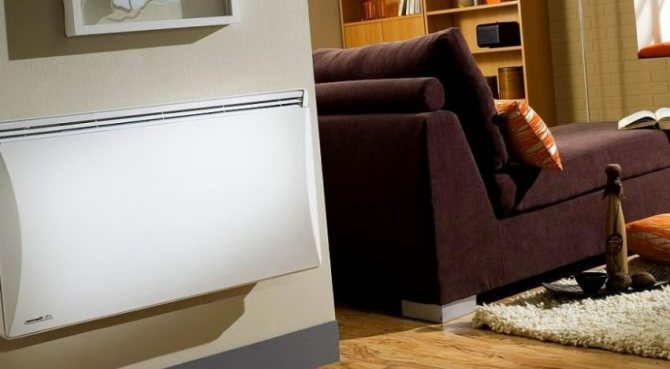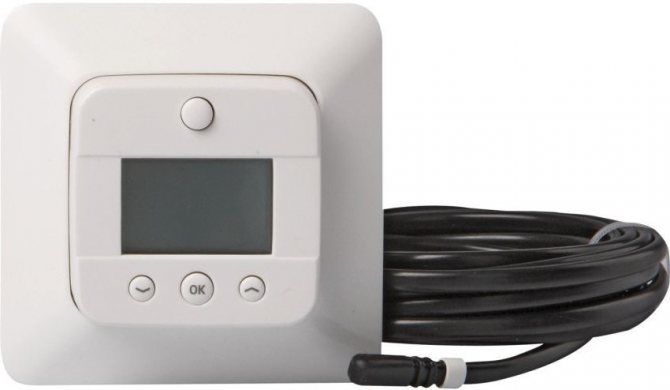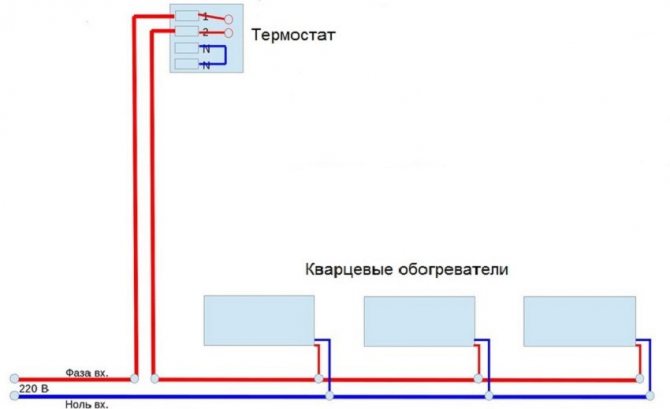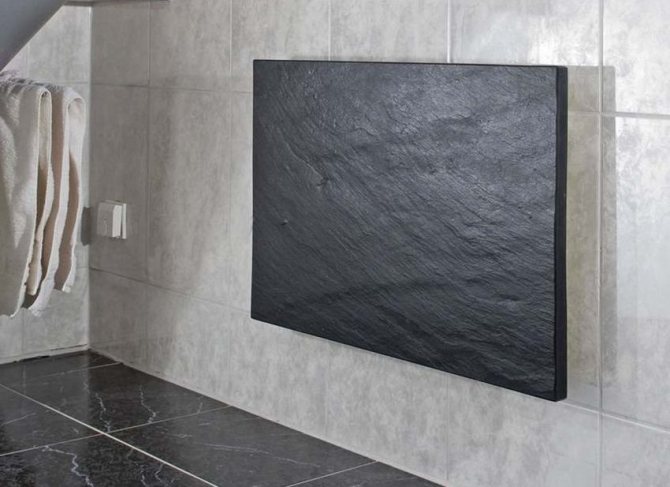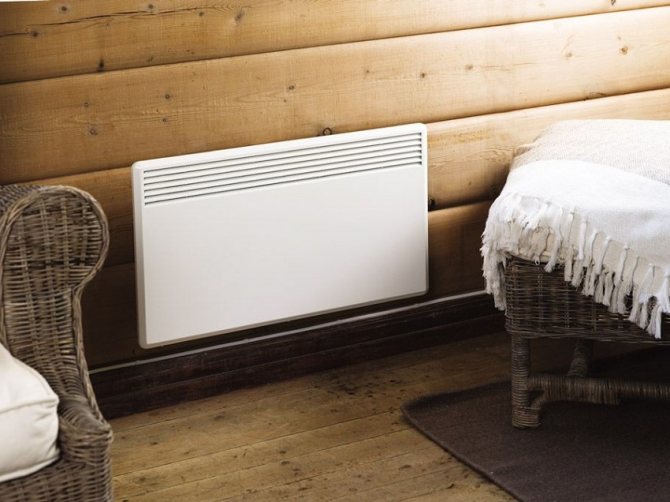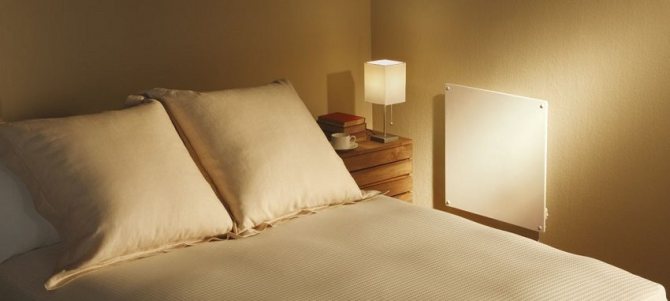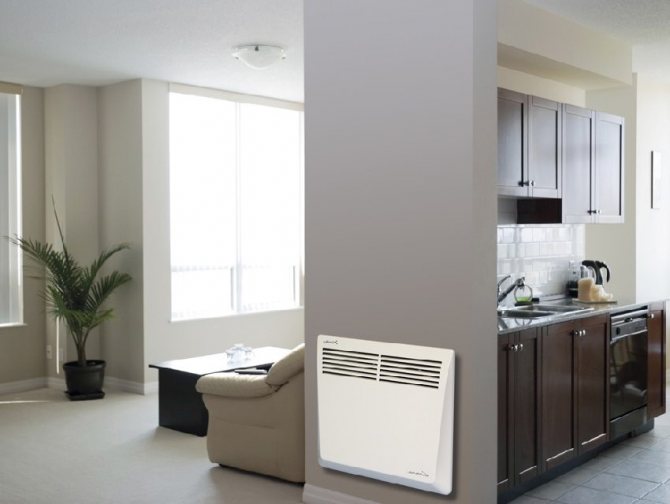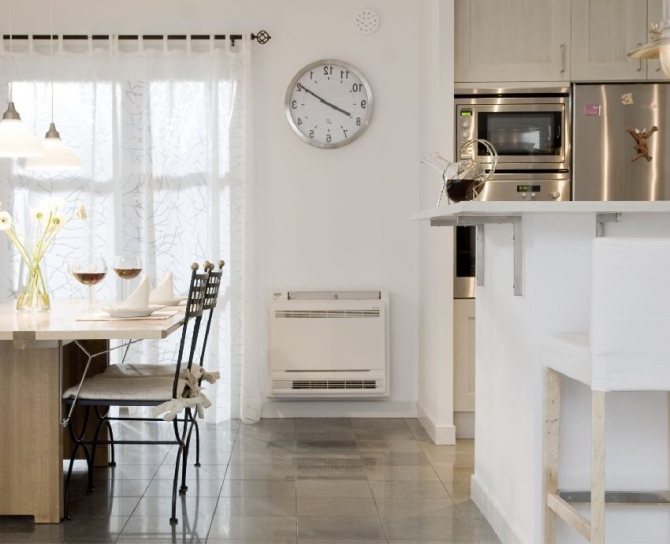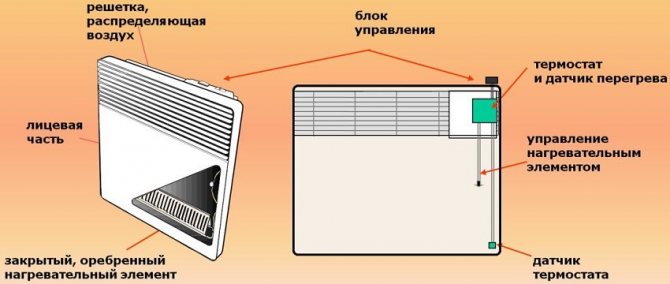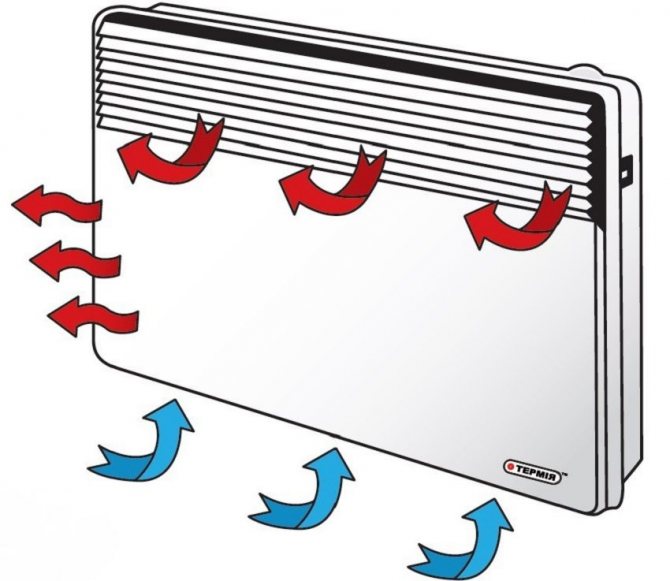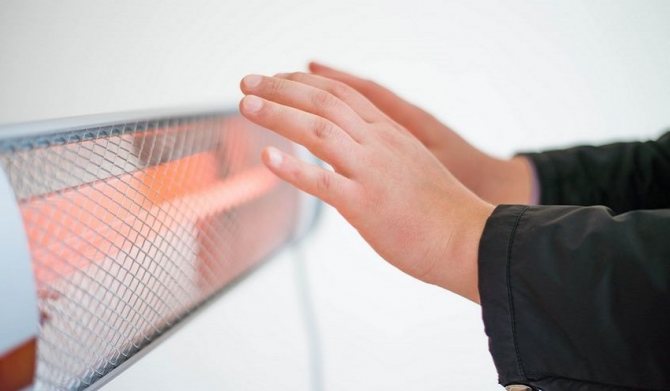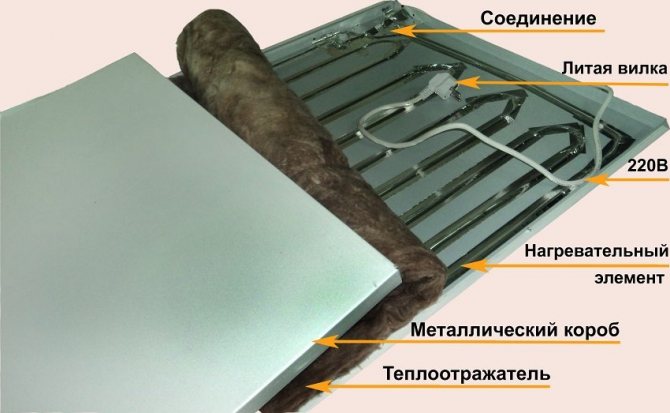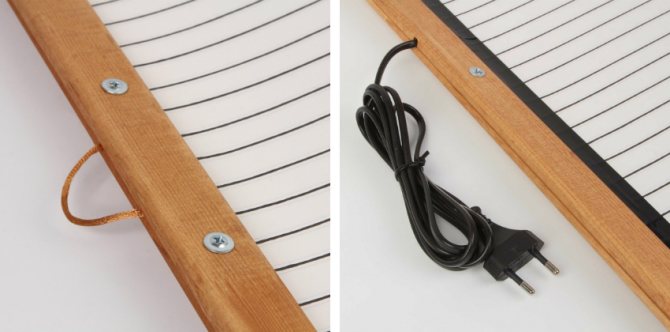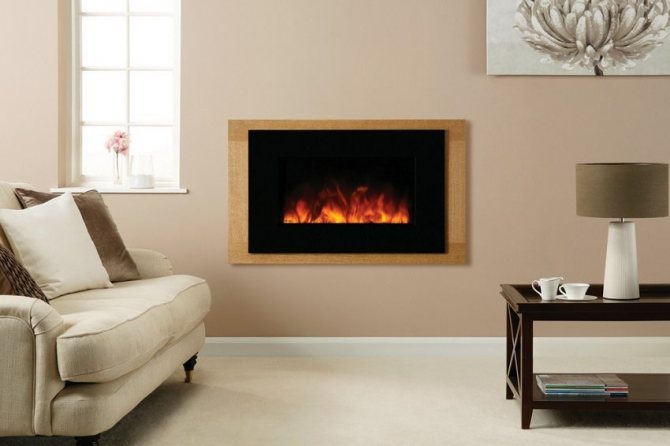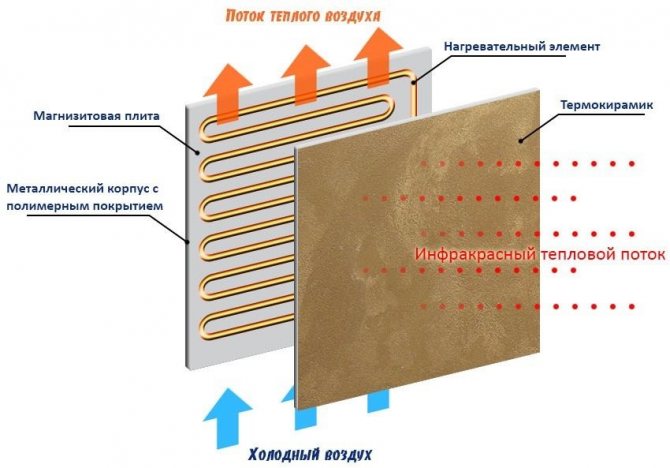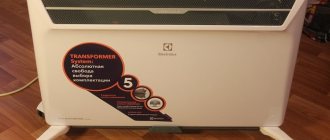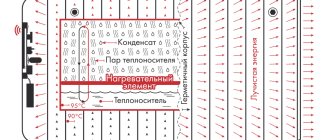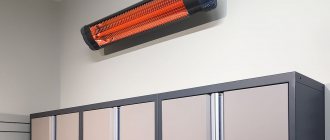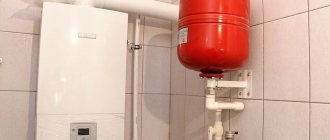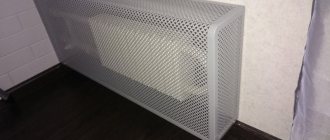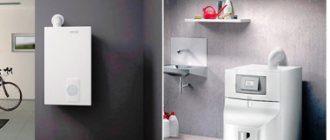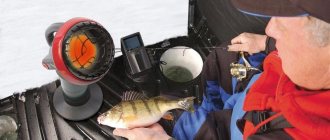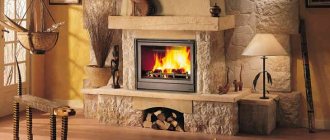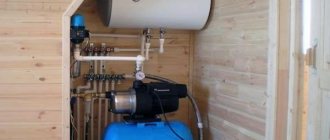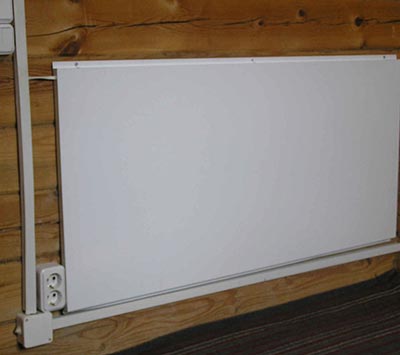
Wall heaters are a type of heating device that can be used to heat a home. Quite often, new types and models of such heaters are called energy-saving, that is, it is assumed that they consume less electricity to heat the same volume of the room, or, in another way, have greater efficiency. In most cases, electric wall-mounted energy-saving home heaters really have high efficiency, that is, they convert electrical energy into heat with minimal losses. But the fact is that almost all electric heating devices, even older models, have a rather high level - more than 90%. Therefore, it is not entirely correct to speak of a significant increase in this indicator. Even theoretically, it cannot be increased by more than 10%.
Their main advantage is different. The fact that using new technologies and materials in them, manufacturers have made them more convenient, practical and attractive in appearance. In addition, thanks to different heating methods, they can heat up the room faster or be safer, and thanks to the ability to automatically control and regulate the power, overheating of the premises is prevented, which makes them more economical.
Types of wall-mounted energy-saving heaters
There are quite a few different types of wall heaters for the home on sale, which manufacturers call energy-saving. They differ in shape, size, power, weight, heating method and additional options.
By the heating method, the following types can be distinguished:
- Heating rooms using thermal radiation;
- Heating by convection.
By design and type of heating element, they can be:
- In the form of lamps with tubular heating elements;
- Panel;
- Film.
By the ability to regulate the power and temperature in the room:
- With thermostat
- Without thermostat
To understand all this diversity and choose a really optimal version of a modern wall heater for your home, consider the positive sides and disadvantages of their various types.
3.2. The advantage of REW compared to heating elements.
The main advantage of REN in comparison with tubular heaters is the creation of a uniform thermal field for the heated object with a minimum thermal power. Due to the absence of unreliable elements (spirals), the use of materials resistant to high temperatures and modification, it is possible to create heaters with a theoretically unlimited service life. Moreover, the efficiency and heat transfer coefficient will be high due to minimal losses during heat transfer from the fuel element through the dielectric to the metal body. On the plus side, the heater can be applied directly to the surface of the heater. This makes it possible to improve the design of products and the technology of their manufacture, significantly reduce the material consumption of devices, and also reduce the consumption of electricity in everyday life, materials and fuel resources in industry.
Infrared wall heaters
Heaters of this type heat the room mainly due to thermal (infrared) radiation. In this case, structures or objects are first heated to which radiation is directed (floor, walls, furniture), and already from them the air in the room is heated.This heating method is distinguished by the ability to quickly heat certain zones in the room, that is, by low thermal inertia. But this may also be their disadvantage - when the heater is turned off, the flow of thermal energy immediately stops. These heaters are silent and do not burn oxygen from the air.
Infrared wall heaters can be:
- In the form of lamps with tubular heating elements;
- In the form of flat panels;
- Film.
In addition, they can also have a different design, shape, weight, power and additional options: sensors and regulators that control their work.
Wall mounted infrared heaters with tubular heating elements
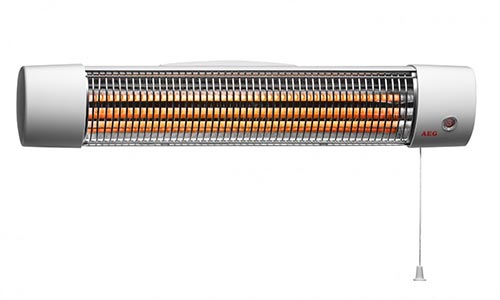

Wall mounted infrared heater with tubular heating elements
Such energy-saving heaters are a housing in the form of a flat lamp with a reflector and heating elements in the form of vacuum quartz tubes, which contain a tungsten filament or carbon fiber. In the first case, radiation occurs not only in the infrared, but also in the visible range, and in the second case, practically only in the infrared. Therefore, such wall heaters, with a carbon (carbon) heating element, are more efficient in heating the room. Under the influence of thermal infrared radiation, objects not only heat up, but also warm up to a depth of about 2 cm. Because of the quartz tubes in which the heating elements are enclosed, they are often called quartz.
Such a heater can be mounted on the wall at a certain angle, depending on the need to heat the entire room or a certain part of it. It is especially convenient to use such wall-mounted energy-saving quartz heaters for the house in which they live periodically or for summer cottages.
Infrared Wall Mounted Carbon Fiber Panels
They are a flat panel, most often of a rectangular shape with a carbon heating element enclosed in it, that is, made of carbon fiber.
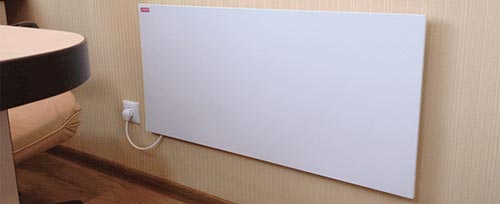

Wall mounted panel heater with carbon heating element
Heating of the room occurs mainly as a result of thermal infrared radiation. Convection is also present to some extent, since the air in contact with the hot surface of the panel rises and circulates. Carbon wall panels are relatively lightweight. When heated, their heating element - carbon fiber, generates anions - negatively charged particles that balance the atmosphere of the heated room and deposit dust from it.
The outer surface of such a panel heats up to a temperature of 80⁰C, which allows it not to burn oxygen and dust, but you can still get burned. Therefore, you need to be careful, and in the presence of small children, hang such a panel so that the child cannot reach or refuse to use it.
Most of these heating panels with a power of 1 kW and more are equipped with built-in thermostats, mechanical or automatic, which allows you to correctly select the temperature regime and helps to save energy. In heaters of low power 300-500 W they are often absent.
Heating pictures
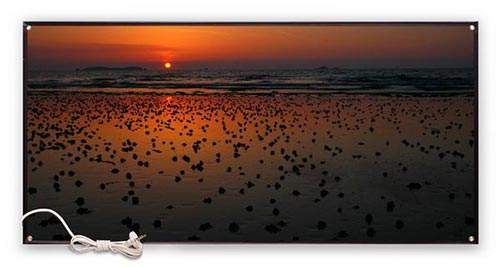

Panel infrared heater in the form of a picture
Heating paintings are essentially the same infrared wall mounted energy saving home heaters, which can be a carbon fiber heater panel (pictured above) or a canvas with a flat ultra-thin film carbon heating element, as in the photo below.


Film carbon heater in the form of a picture
A distinctive feature of such carbon infrared heaters is that a drawing or photograph is applied on their surface and, in addition to heating the room, they perform a certain decorative function and, with a good image selection, can even serve as a decoration for a room. Otherwise, such heaters are no different from carbon heaters without a printed pattern.
Ceramic wall panels
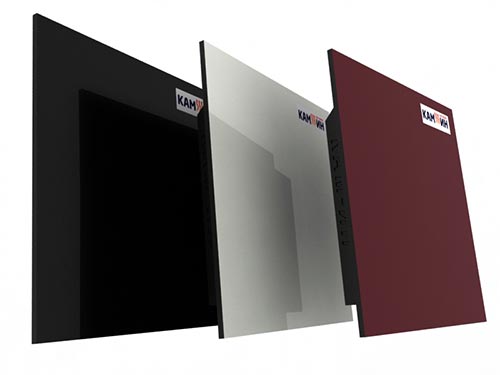

Ceramic Wall Panel Heaters
The heating element of the ceramic panel is ceramic plates. Heat spreads over them evenly, and the surface of the panel itself heats up weakly. Such a heater has a greater thermal inertia than carbon and quartz infrared heaters, but still heats up the room quite quickly due to infrared radiation and partly due to convection. The heat from such panels is softer and allows you to create a rather comfortable atmosphere in a heated room. The disadvantages include the greater weight of such wall panels.
Heating elements flexible tape ENGL-2
SPECIFICATIONS
Features of the use of tape heaters ENGL-2
The consumer, purchasing a heating element ENGL-2, receives a completely finished product. Any design changes, such as dimensions, power, etc., are strictly prohibited. It is possible that the heating cable will be made to order with the parameters that suit the customer. But even in this case, the specific power of the heater should not be higher than 40 W per meter.
As a rule, heating element ENGL-2 is used in the following cases:
• It is required to heat the gutter and the roof as a whole or separately. Since ENGL-2 is a flexible heating tape, it can be used to heat any roof structures, gutters, gutters, funnels, drippers, etc.
• It is necessary to heat open areas. Very often, heating cables are successfully used to maintain an acceptable temperature in parking lots, driveways, parking lots, sidewalks, ramps, outdoor steps, and much more.
• Tanks and pipelines of various shapes and designs need heating. Heating element ENGL often becomes an indispensable element when performing various technological processes at oil refineries, in breweries, at cottage construction, at gas stations and in many other sectors of the economy.
Unlike many other types of heating cables, the heating element ENGL-2 is successfully used in various conditions. So, for example, heating tape ENGLU - 400 cannot be used in conditions of high humidity. And ENGL-2 successfully performs tasks when fully immersed in water, because it is completely sealed. In the same way, it is possible to use ENGL-2 at low temperatures.
If to all of the above we add a fairly moderate price of the product, which distinguishes it well among the entire range of flexible heaters, then we can say with confidence that the heating element ENGL - 2 is one of the best on the market today.
INTRODUCTION
• Technical description and operating instructions for heating flexible tape elements ENGL-2 are intended for familiarization with the device, requirements for installation, operation and maintenance.
• When studying the design and technical characteristics, you should additionally be guided by the documentation set TA2.983.639.
PURPOSE
• Heating flexible tape elements ENGL-2 (hereinafter referred to as "heaters") are designed to warm up and compensate for heat losses of various technological equipment, apparatuses, pipelines, valves, control equipment, etc.
• Climatic modification UHL-1 in accordance with GOST 15150-69.
• Operation of heaters is permitted in fire-hazardous installations (outdoor and indoor) of classes II-I, II-II, II-III in accordance with the "Electrical Installation Rules" (PUE).
• An example of writing a conventional designation of a heater with a nominal power of 0.2 kW, an operating voltage of 220 V and a length of 13.57 m when ordering and in the documentation of another product: Heater ENGL-2-0.2 / 220-13.57 TU112-RSFSR- 042-92.
TECHNICAL DATA
• Basic parameters, sizes and executions - correspond to the requirements of table. one.
• Supply voltage, V - 220
• Dimensions of the section of the active heating part:
• thickness, mm 3.5 ± 0.15
• width, mm 23 ± 0.25
• When operating the heaters, if the temperature on the surface of the heater exceeds 60 ° C, means of automatic temperature control must be provided.
• The design of the heaters is waterproof.
• Deviation of the electrical resistance value from the nominal value (table 1) should not exceed ± 6%.
• Minimum bending radius, mm - 20
• Average service life, years - 6
• Average shelf life, years - 3
• Products cannot be repaired.
• The design of the heaters meets the requirements of GOST 12.2.007.0-75.
• The heaters are kept cold for 1 min without breakdown and surface discharge. Test sinusoidal voltage with a frequency of 50 Hz on an installation with a power of 0.5 kW, equal to 1500 V.
Quartz Wall Mounted Energy Saving Heaters for Home
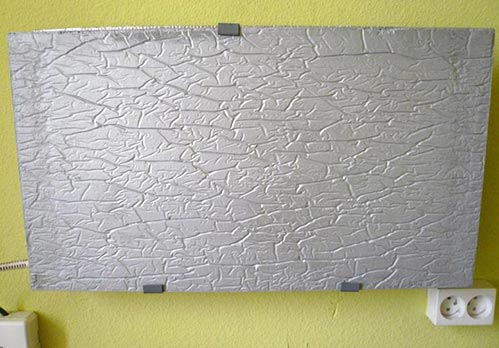

Quartz Heating Wall Panel
This is another type of modern wall mounted energy saving heating panels. They represent a slab of quartz sand, in which heating elements in the form of metal spirals are located. Electric heating elements first heat the contents of the panel, which in turn accumulates this heat and releases it into the room. Due to this specific heating, such quartz panels have a fairly large thermal inertia. In order for such a stove to fully heat up, it takes from 15 to 25 minutes. Therefore, it will not be possible to heat the room instantly with such a heater. On the other hand, a heated panel can retain heat for a long time and heat up the room even when disconnected from the power supply. The maximum surface temperature of the slab is 95 ° C. If there are children in the house, then such heaters must be protected with special screens or suspended at such a height that the child cannot reach.
Heating of the room occurs mainly as a result of air convection, but infrared radiation from the panel is also present, like from any heated object. This is essentially the same "dry" electric convector, but with the difference that the heating element heats the air not using an aluminum heat exchanger, but through quartz sand. As a result, the temperature of contact of the heated surface with air decreases and dust is practically not burned, and the inertia of the device increases.Such wall-mounted energy-saving quartz heaters are best used for a house in which they live permanently and in which it is necessary to maintain a constant comfortable temperature.
3.1 Basic concepts of REW.
A feature of REWs is that a thin conductive film with a large heat transfer surface serves as a heater. This ensures low inertia of the heater and its high efficiency.The electrically conductive layer can be obtained in a variety of ways, ranging from vacuum deposition to the use of special resistive sheet materials. Heaters are used on a flat metal substrate using double insulation obtained by sputtering methods. Methods of applying a dielectric to a metal (aluminum, titanium, stainless steel) and a resistive layer to a dielectric are widely used in the electronics industry in the production of integrated circuits and multi-level switching boards of microassemblies. However, they have not found wide application for the manufacture of electric heaters. The priority lies in the fact that the known technological methods and solutions were used to manufacture a new class of distributed electric heaters, which, in principle, have no restrictions on the size of their area.
Electric wall convectors
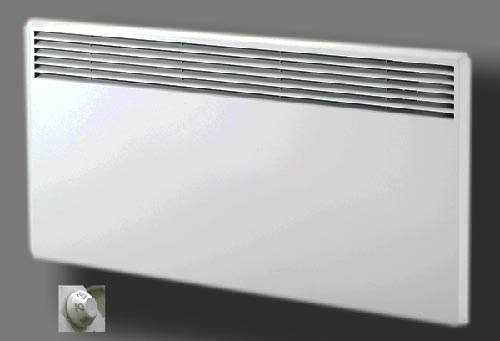

Wall mounted electric convector
They are quite simple in design and effective electrical heating devices. Structurally, it consists of a heating element with a heat exchanger and a convection chamber, which is at the same time a decorative and protective casing. Externally, convectors are distinguished by the presence of openings in the protective casing for air inlet and outlet. The former are located at the bottom, and the latter are at the top or, most often, on the lateral front surface in the form of louvers directing the warm air flow downward. Such a heater heats the room almost completely due to air convection. Thermal radiation from its body is insignificant, since the outer casing does not heat up above 50-60⁰С. Therefore, they are quite safe and can be installed even in children's rooms. But to heat the room instantly with such a heater will not work. It will take some time for the air in the room to rise to the required temperature as a result of convection. Do not dry clothes or cover them to avoid overheating of the heating elements.
Types of electric convectors
Electric convector heaters can have different heating elements:
- Open spiral;
- Closed coil ("dry" heating element);
- Monoblock.
Open coil designs are the cheapest, but such heating elements burn oxygen and dust from the air. Therefore, it is undesirable to install them in premises where people are constantly present. In addition, they cannot be used to heat damp rooms.
Models with closed spirals (heating elements) are safer. Their tubular heating elements are heated to a lower temperature (about 100 ° C) and a plate aluminum heat exchanger is enclosed for greater efficiency. They practically do not burn oxygen, but during their operation you can smell the burnt dust. Especially if the heat exchanger has not been cleaned of dust after a long break in operation. Therefore, before the start of the heating season, it is necessary to remove the protective screen and clean the heat exchanger from dust with a vacuum cleaner.
But the best option for an electric convector is a model with a monoblock heating element. Its one-piece body, which at the same time acts as a heat exchanger, is made of aluminum alloys, and the spiral, which is inside, is surrounded by a special filling. Such a heating element is more reliable and durable.
Most wall-mounted electric convectors are equipped with thermostats, and some have additional options, for example, an air ionizer that precipitates dust and enriches the air with healthy ions.
We should also mention a rather popular special type of electric convectors - the so-called warm skirting boards, which are mounted at the wall-floor junction and do not require a separate space on the wall.In addition, heated air comes out of them almost at the very floor, contributing to better heating of the room.
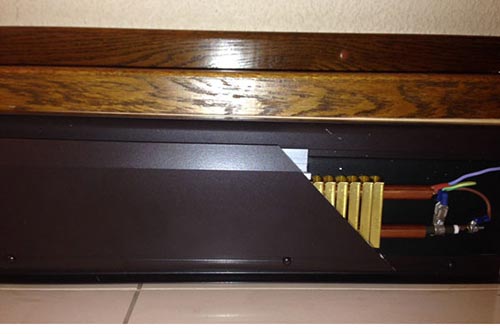

Electric convector - "warm plinth"
Modular type electric radiators
Such heaters in appearance resemble radiators of a water heating system; they can also be mounted on the wall, but they work autonomously.
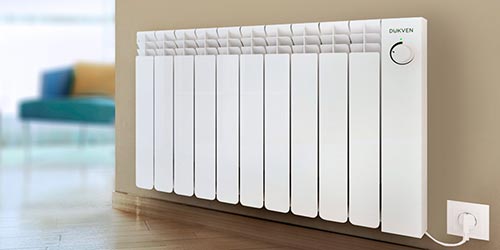

Wall mounted electric modular radiator
There are several types of modular radiators:
- Liquid ones with a built-in heating element, which work on the principle of an oil radiator familiar to everyone, but they can contain water, non-freezing or special liquids as a coolant;
- Vapor-droplet, in which a small amount of liquid is heated to the formation of vapor, which rises and, giving its energy to the radiator body, condenses back into the liquid.
- "Dry" in which steel rod-type heaters are used. Each section has its own alloy steel rod heater.
Which wall mounted energy saving home heaters are better?
When making a choice and giving preference to one or another type or model of wall heaters, the following factors should be taken into account or the following questions should be answered:
- What thermal power should it have? The more power, the faster the room heats up. But, on the other hand, the more powerful the device, the more expensive it is and it requires an appropriate wiring cross-section. The thermal power of any electric heater is directly related to the electric one. Therefore, if you are promised that the heater consumes 1 kW of electricity, and its thermal power is 1.5 kW, then this, to put it mildly, cannot correspond to reality, the efficiency cannot be more than 100%, the law of conservation of energy has not yet been canceled. This is not a heat pump.
- How quickly should it heat up the room? For example, if you need to very quickly heat a room or some of its area, then it is better to choose one of the infrared heaters. If the heating rate is not a big deal, other options can be considered.
- Should it heat the entire room or just create a separate comfort zone? To heat the entire room, it is better to use heaters with predominantly convector heating (convectors, radiators), and infrared to create a comfort zone.
- How safe should a heating device be and what is the permissible temperature of the case? The safest in terms of body temperature are convector heaters. If there are small children in the house, then it is better to give preference to this type of heating device.
- Will the heater be used as primary heating or as an additional (backup) heat source? If this is the main heating, then it is necessary to choose more powerful heaters with thermostats, sensors and all sorts of useful options. If this is an additional source of heat, then you can choose a less powerful and, accordingly, cheaper, without unnecessary options.
- Will it be used in a house where they live permanently or periodically, for example, in a country house?
- How much are you willing or able to allocate for such a purchase? The choice of the type of heater, manufacturer, and hence the quality and availability of various useful options in it also largely depends on this.
After you find the answers to these questions, it will already be clear to you which of the types of wall-mounted energy-saving heaters discussed above is most suitable for your home.
What to consider when choosing a model
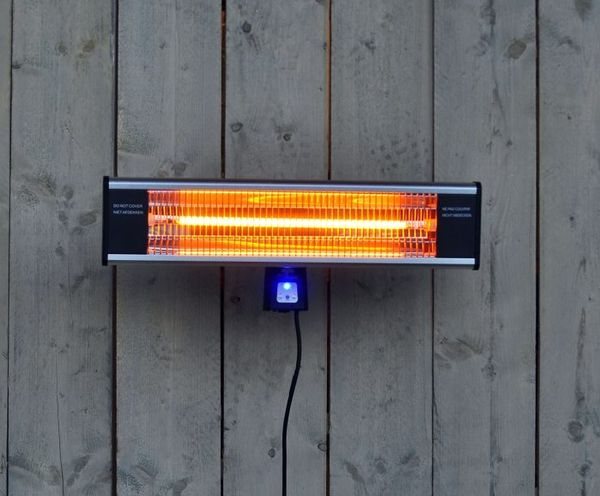

In the house, the number of heating products is set depending on the heating area. Operation is of great importance. This is taken into account when choosing a heater. If the room is large, several of them are needed, in a small one it will become warm from one product.When buying a ceiling model, be sure to pay attention to the condition of the ceiling, it must withstand the weight of the selected heater. It is better to make your choice on lightweight devices with an aluminum body, or film. The height of the ceiling also matters. This is to ensure a normal heat flow. Heaters with a remote control, overheating sensor and thermostat are easier to use. With proper maintenance, energy consumption will be small, and the device itself will work properly for a long time.
Manufacturers produce a large assortment of infrared home heaters. Buyers have a lot to choose from. Many models allow you to save resources, while heating your home well. They work in such a way that there is no need to additionally ventilate the room, they do not absorb oxygen. If the operating standards are observed, infrared radiation will have a positive effect on the body.

